Oman, a nation where tradition harmoniously blends with modernity, offers a unique shopping experience through its vibrant souks and markets. These bustling hubs are not just places to buy goods but are cultural landmarks that offer insights into Omani heritage, craftsmanship, and daily life. From the aromatic scent of frankincense to the glittering displays of silver jewelry, Oman’s markets are treasure troves waiting to be explored. This ultimate guide will navigate you through the most iconic souks and markets in Oman, providing tips and highlights to enhance your shopping adventure.

Understanding Omani Souks
Souks (also spelled “souqs”) are traditional marketplaces commonly found in Middle Eastern countries. In Oman, souks are integral to the social and economic fabric, serving as centers for trade, social interaction, and cultural exchange. They offer a wide array of products, including spices, textiles, handicrafts, jewelry, and more. Visiting a souk is not just about shopping; it’s an immersive experience that engages all the senses.
Top Souks and Markets in Oman
1. Mutrah Souk, Muscat
Overview: One of the oldest and most famous souks in Oman, Mutrah Souk is located along the Mutrah Corniche in Muscat. Its labyrinthine alleys are filled with shops selling traditional Omani items.
Highlights:
- Frankincense and Myrrh: High-quality resins used for incense.
- Silver Jewelry: Traditional Omani designs, including Khanjar (dagger) pendants.
- Textiles: Pashminas, scarves, and traditional garments.
- Antiques and Handicrafts: Brassware, pottery, and decorative items.
Tips:
- Bargaining: Negotiating prices is customary; start by offering about 50% of the quoted price.
- Best Time to Visit: Evenings when the souk is most lively.
- Navigation: The souk can be maze-like; keep track of landmarks or use a map.
.jpg)
2. Nizwa Souk
Overview: Adjacent to the historic Nizwa Fort, Nizwa Souk is renowned for its traditional goods and lively atmosphere, especially during the Friday livestock market.
Highlights:
- Silverware: Known for exquisite silver Khanjars and jewelry.
- Pottery: Handmade clay pots and decorative pieces.
- Dates: A vast variety of Omani dates and date-based products.
- Spices and Incense: A selection of local spices, saffron, and incense.
Tips:
- Friday Livestock Market: Arrive early (around 7:00 AM) to witness the bustling animal auctions.
- Cultural Etiquette: Ask permission before photographing people, especially during the livestock market.
- Cash Transactions: Many vendors prefer cash; ATMs are available nearby.
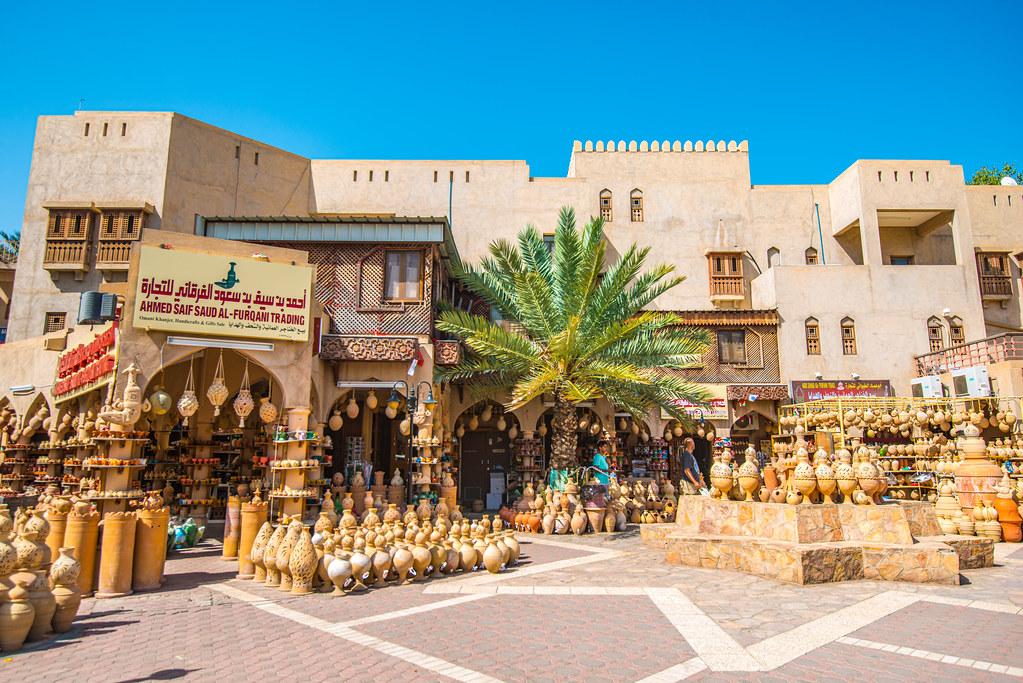
3. Muttrah Fish Market
Overview: Also located in Muscat, this market offers a glimpse into Oman’s rich maritime culture. It’s a modern facility where local fishermen sell their daily catch.
Highlights:
- Fresh Seafood: Wide variety of fish, shellfish, and other seafood.
- Cultural Experience: Observe the traditional auctioning process.
- Photography: Vibrant scenes are perfect for photography enthusiasts.
Tips:
- Timing: Visit early in the morning (6:00 AM to 10:00 AM) for the freshest selection.
- Hygiene: Wear closed-toe shoes; the floors can be wet.
- Purchasing: Even if not buying, vendors are friendly and welcoming to visitors.
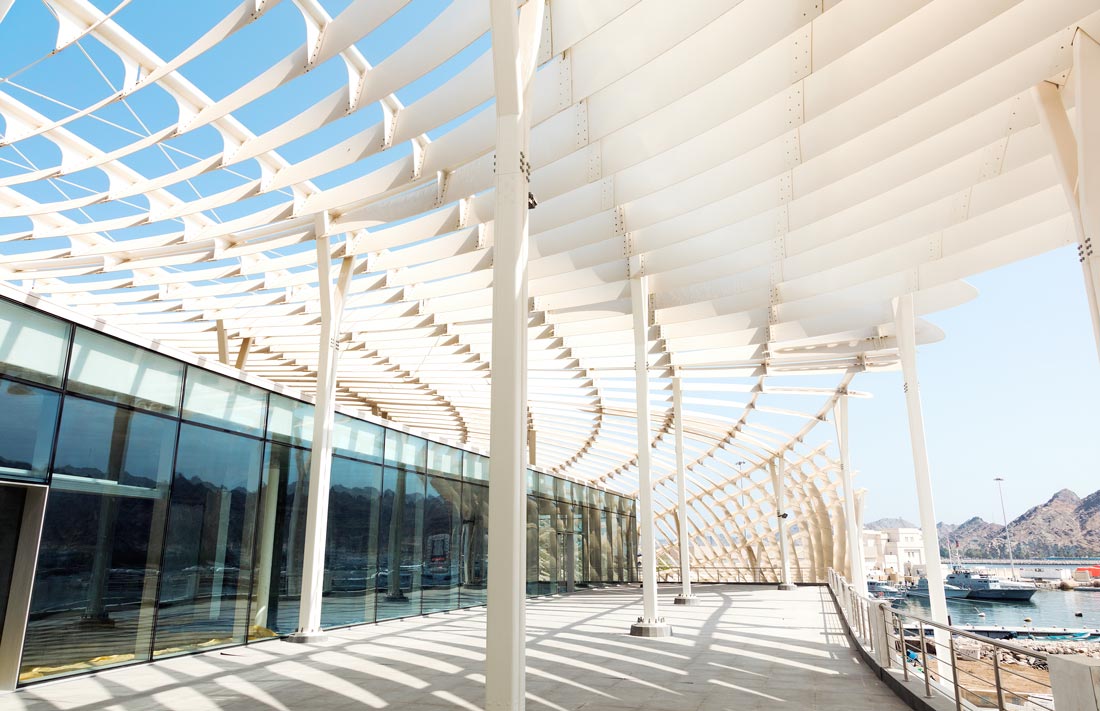
4. Ibra Wednesday Souk
Overview: Unique for being a market predominantly run by and for women, the Ibra Souk in the Al Sharqiyah region operates only on Wednesdays.
Highlights:
- Handicrafts: Embroidered textiles, traditional clothing, and handmade crafts.
- Jewelry and Accessories: A variety of ornaments and decorative items.
- Local Delicacies: Traditional Omani sweets and snacks.
Tips:
- Cultural Sensitivity: Photography is discouraged to respect privacy.
- Dress Code: Modest attire is particularly important here.
- Access: Open from early morning until midday.
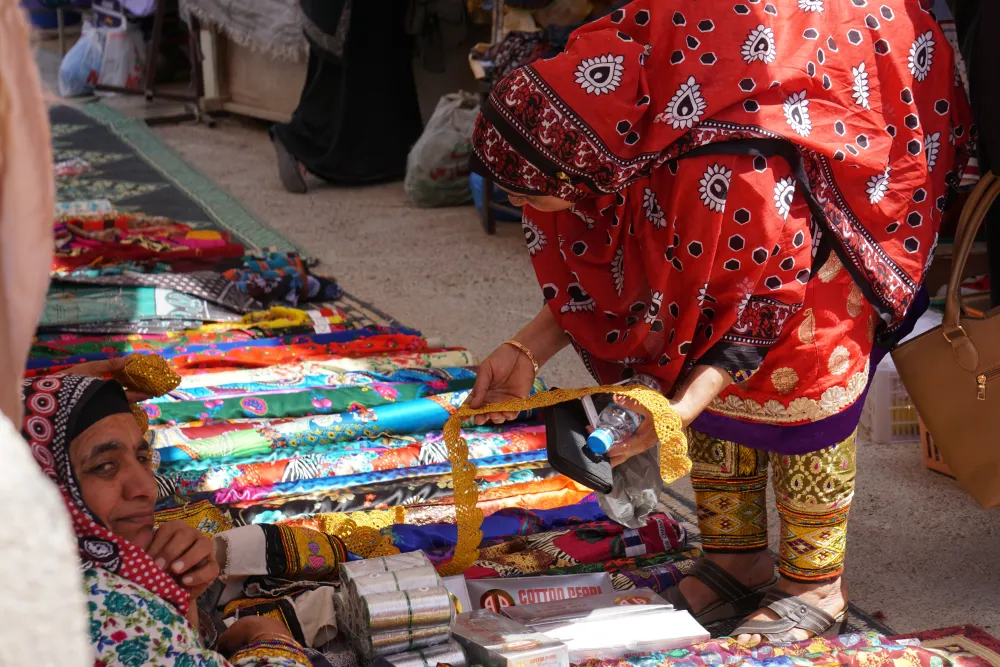
5. Seeb Souk
Overview: Located in the coastal town of Seeb, northwest of Muscat, this souk is frequented by locals and offers a more authentic, less touristy experience.
Highlights:
- Clothing: Traditional Omani attire and fabrics.
- Household Goods: Everyday items used by locals.
- Food Stalls: Fresh produce, spices, and street food.
Tips:
- Local Interaction: Great opportunity to mingle with locals.
- Pricing: Generally lower prices compared to tourist-heavy markets.
- Navigation: The souk is expansive; allocate ample time to explore.
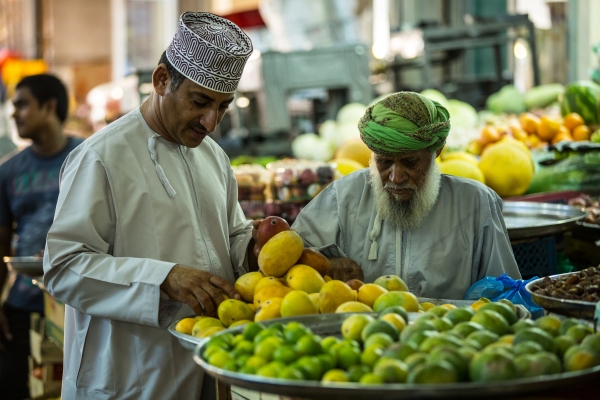
6. Al Husn Souk, Salalah
Overview: Situated in the Dhofar region, Al Husn Souk is famous for its abundance of frankincense and traditional Dhofari items.
Highlights:
- Frankincense: High-quality resins, oils, and burners.
- Textiles: Unique Dhofari fabrics and clothing.
- Handicrafts: Items made from camel bone and other local materials.
Tips:
- Khareef Season: Visit during the monsoon season (June to September) when the area is lush and the souk is bustling.
- Bargaining: Polite negotiation is acceptable.
- Climate: The region is humid; dress comfortably.
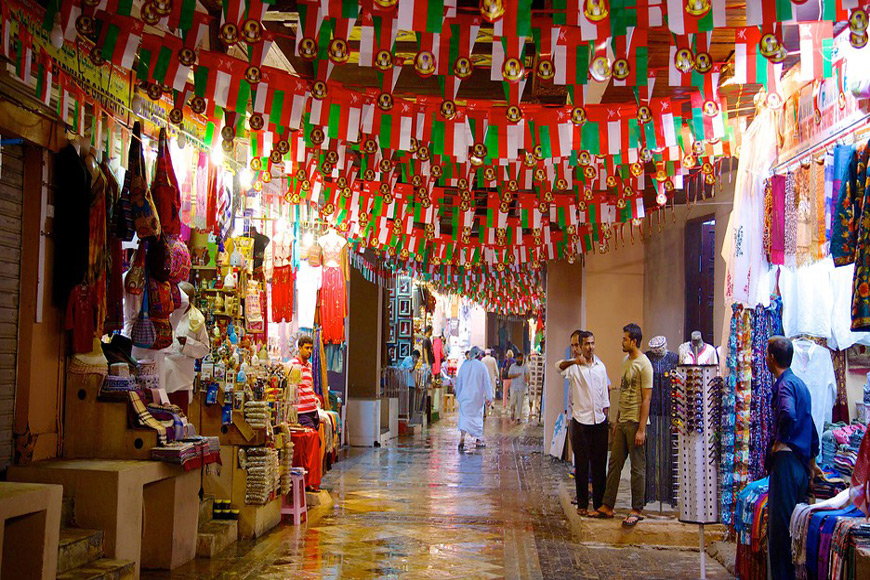
7. Sinaw Thursday Market
Overview: A traditional Bedouin market is held every Thursday in the town of Sinaw, offering a glimpse into the nomadic lifestyle.
Highlights:
- Livestock Trading: Camels, goats, and other animals.
- Bedouin Handicrafts: Woven items, rugs, and camel accessories.
- Gold and Silver Jewelry: Traditional designs unique to the region.
Tips:
- Early Start: The market starts at dawn and winds down by midday.
- Cultural Respect: Avoid photographing Bedouin women without permission.
- Cash Only: Ensure you have enough cash, as card facilities are unlikely.
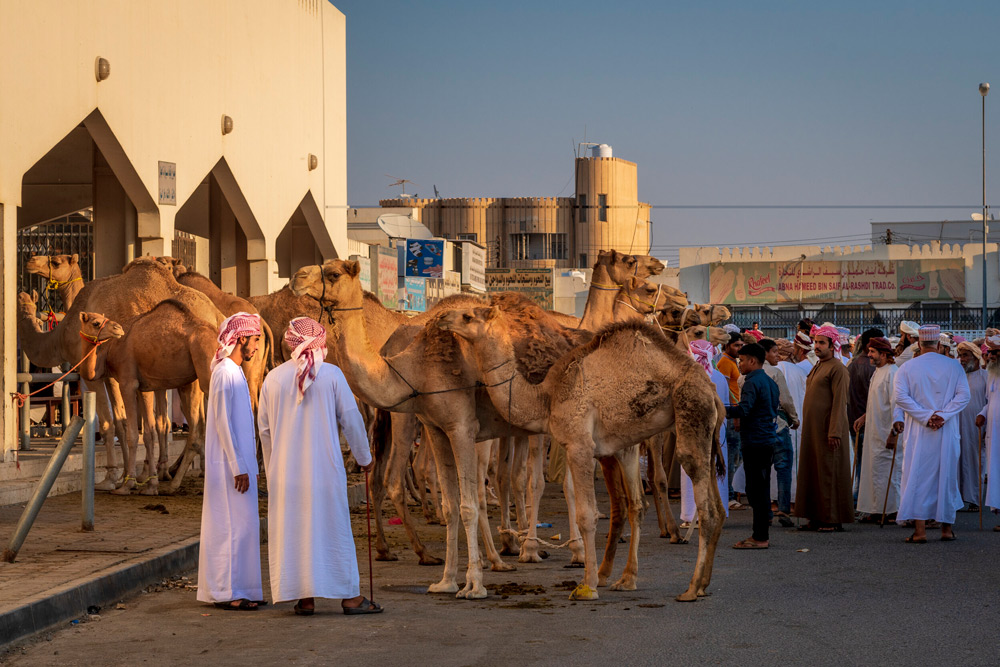
8. Bahla Souk
Overview: Near the UNESCO-listed Bahla Fort, this souk is known for its pottery and traditional crafts.
Highlights:
- Pottery: Handmade clay pots, vases, and decorative items.
- Copper Works: Traditional copper utensils and ornaments.
- Traditional Weapons: Decorative daggers and swords (for display purposes).
Tips:
- Combine Visits: Plan a visit to Bahla Fort and Jabrin Castle on the same day.
- Artisan Workshops: Some potters allow visitors to watch or participate.
- Purchasing Pottery: Ensure items are well-packed for transport.
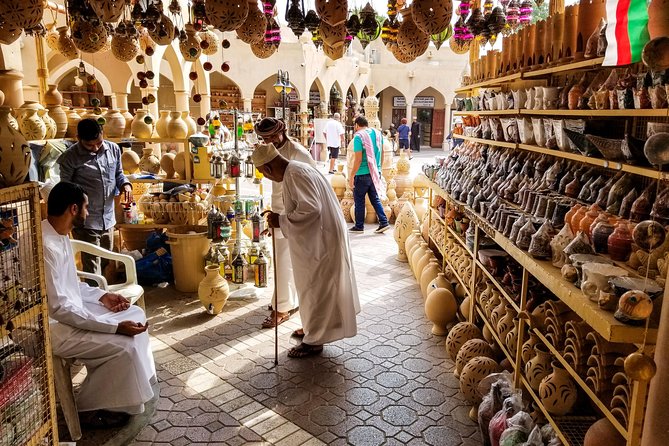
What to Buy in Omani Souks
- Frankincense and Incense Burners: Oman is famed for its high-quality frankincense.
- Silver Jewelry: Traditional designs, often handcrafted.
- Khanjar: The traditional Omani dagger, a symbol of national pride (usually sold as replicas for display).
- Halwa: A sweet, gelatinous dessert made from sugar, rosewater, and spices.
- Spices: Saffron, cardamom, and other Middle Eastern spices.
- Textiles: Pashminas, embroidered fabrics, and traditional garments.
- Pottery and Handicrafts: Decorative and functional items made from local materials.
Tips for Shopping in Souqs
Bargaining Etiquette
- Start Low: It’s customary to negotiate; begin with a price lower than you’re willing to pay.
- Politeness is Key: Always bargain with respect and a friendly demeanor.
- Walk Away Tactic: If unsure, politely walking away may lead the vendor to offer a better price.
Payment Methods
- Cash Preferred: Most vendors accept cash only; and carry small denominations.
- ATMs: Available in major towns and cities; less likely in rural areas.
- Currency: The local currency is the Omani Rial (OMR).
Cultural Considerations
- Dress Modestly: Cover shoulders and knees to respect local customs.
- Photography: Always ask permission before taking photos of people or inside shops.
- Business Hours: Souks often close during midday (1:00 PM to 4:00 PM) and reopen in the evening.
Quality Assurance
- Authenticity: Be cautious of counterfeit items; buy from reputable vendors when possible.
- Silver Purity: Omani silver is typically of high purity; look for hallmarks or certifications.
- Export Restrictions: Certain antiques and artifacts may have restrictions; verify before purchasing.
Combining Souk Visits with Cultural Exploration
- Historical Sites: Many souks are located near forts, castles, or historical landmarks.
- Culinary Experiences: Try local Omani cuisine at nearby restaurants or street stalls.
- Festivals and Events: Plan visits during cultural festivals for a more enriching experience.
Conclusion
Exploring the souks and markets of Oman is a journey into the heart of the country’s rich cultural heritage. Each market offers a unique atmosphere, a variety of goods, and an opportunity to interact with friendly locals. Whether you’re hunting for souvenirs, seeking to understand traditional Omani life, or simply enjoying the vibrant scenes, the souks are an essential part of any visit to Oman.
So immerse yourself in the sights, sounds, and scents of Oman’s markets, and take home not just souvenirs, but memories of a cultural experience unlike any other.
We hope this guide enhances your exploration of Oman’s souks and markets. Happy shopping and safe travels!
